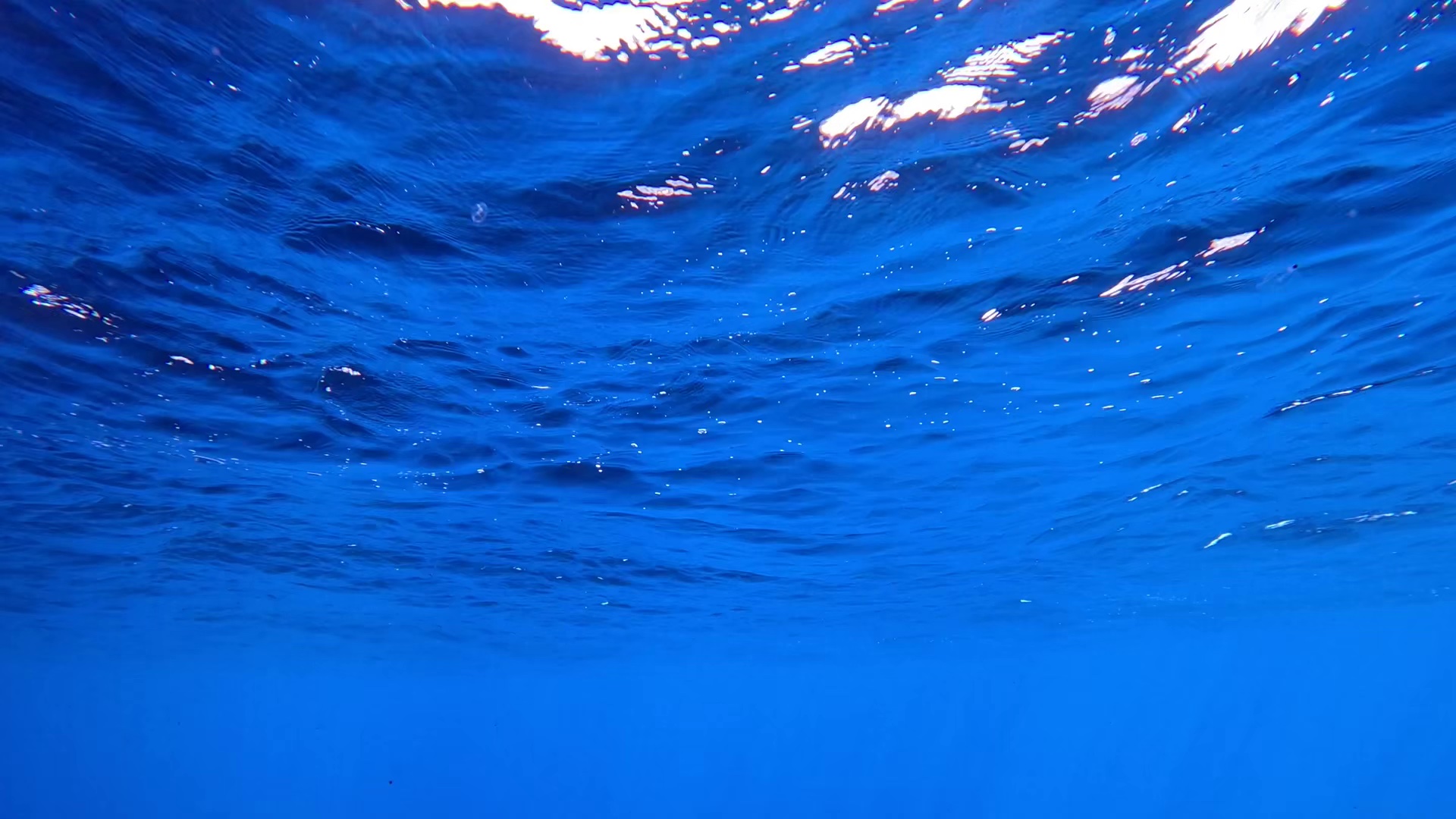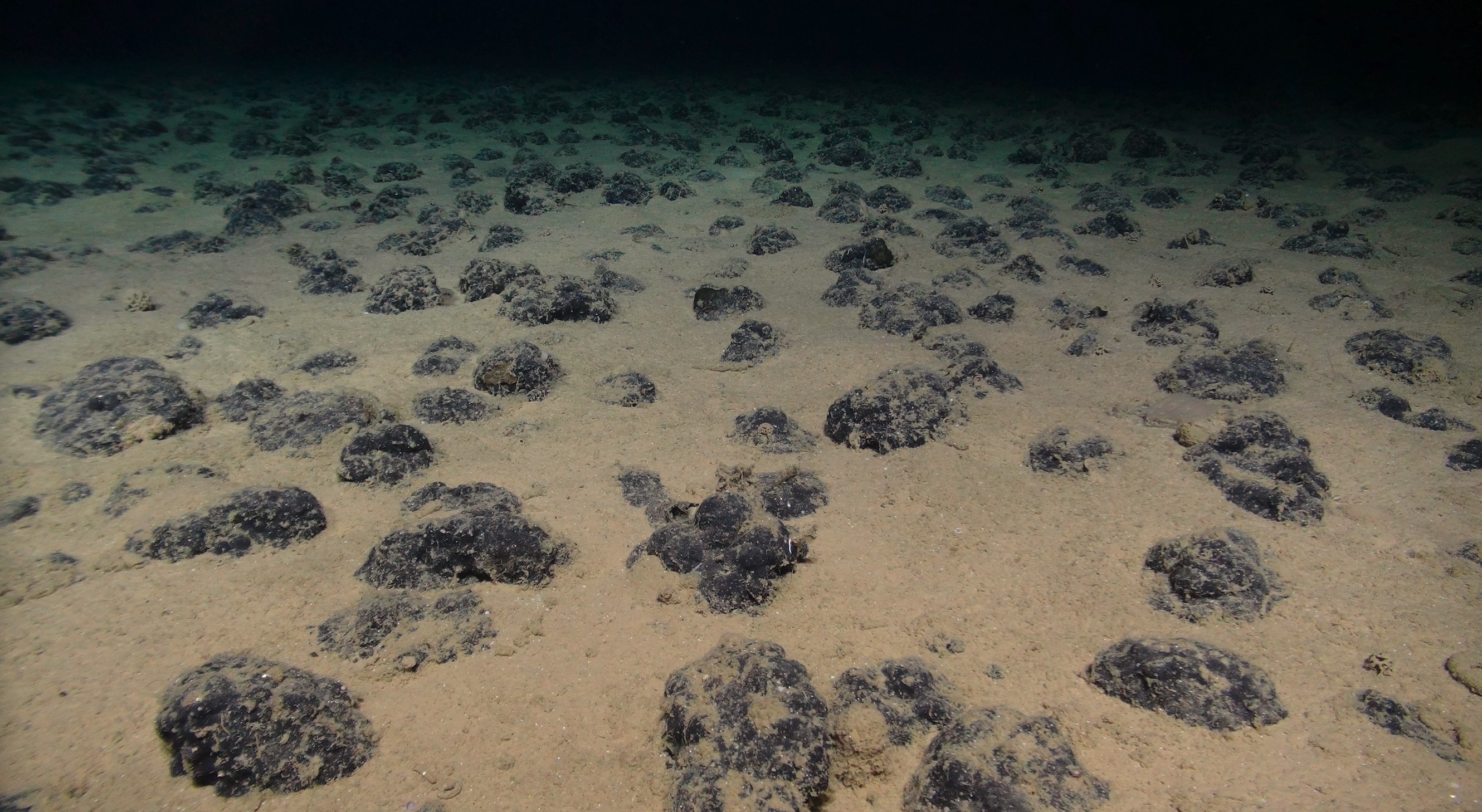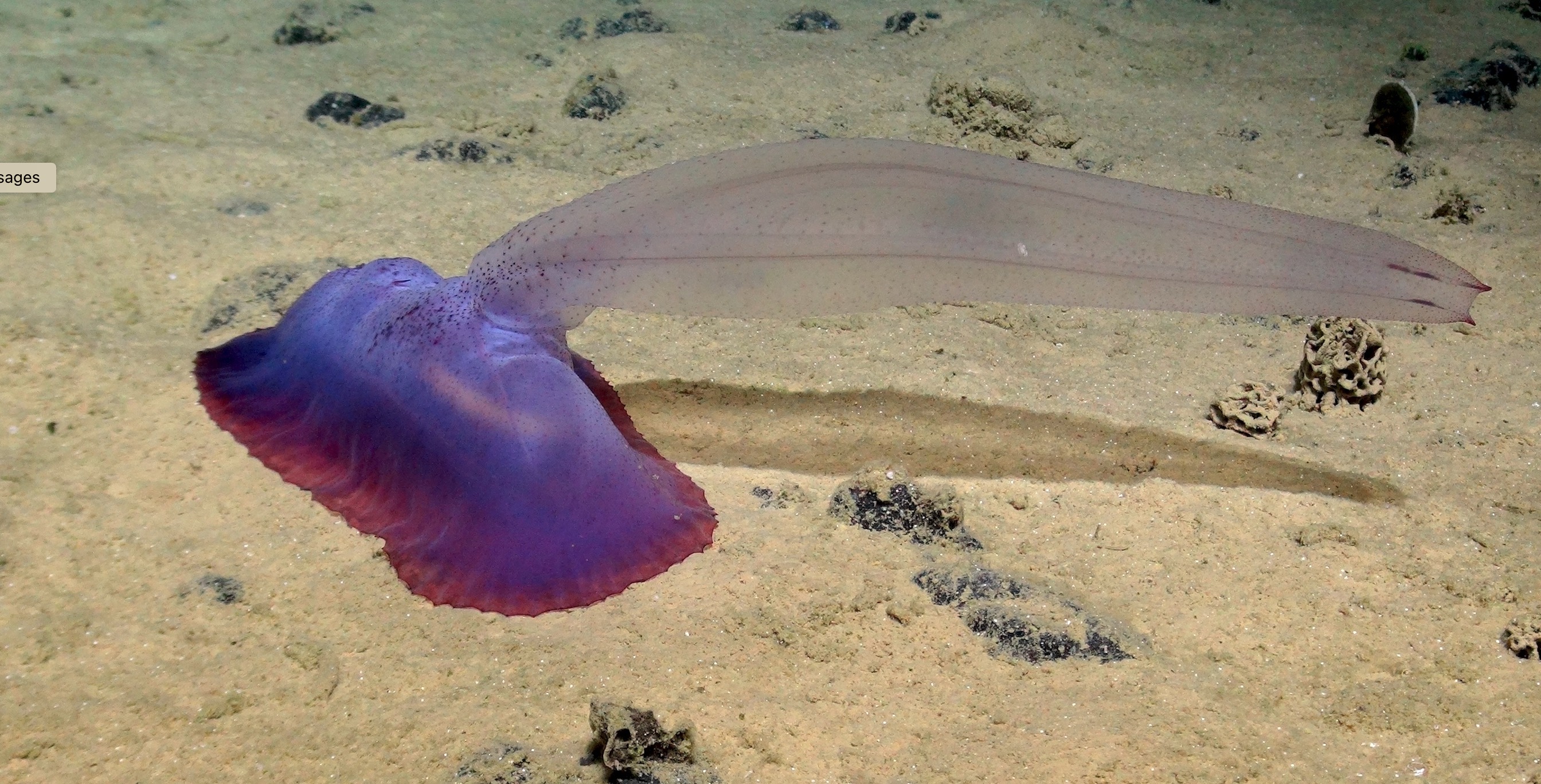by Adrian Glover, Chief Scientist on the RRS James Cook.
Somewhere in the East Pacific, About Tea Time.
My colleague Thomas and I just lowered a GoPro camera on a long pole off the stern of the research ship James Cook. ‘What will we see?’ we thought, reasonably excited. The answer was nothing. Just blue.. the endless clear blue of a Pacific ocean with 4000 metres of water below us. This was in fact a bit surprising. We did the same thing last night and within minutes the camera was being chomped on by a three metre long Oceanic White Tip shark.
Authors of adventurous novels for a general audience might write: ‘Sharks circled the ship, ominously.’ Well, I can confirm that sharks really are circling our ship, ominously. The large finned white tips, and smaller grey silky sharks. But only at night. By day its Pacific blue and not a Megalodon or modern friends in sight.
‘Blue is the colour of desert in the sea’, wrote Harald Sverdrup in his 1942 book, The Oceans. Sverdrup, the oceanographer’s oceanographer, multi-lingual Norwegian polymath, polar explorer and director of the Scripps Institution of Oceanography in its formative years*. He was famous enough to even have a unit of measurement named after him - the sverdrup (Sv) which measures water flow. What did he mean by desert?

'Blue is the colour of desert in the sea'. The water off the stern of the RRS James Cook in the eastern tropical Pacific, February 2024. Image: A Glover
Our ship is in the eastern Tropical Pacific. The waters here are oligotrophic, nutrient poor and the blue simply reflects the fact that there is less plankton in the surface, especially in the day. During these days of blue, 300 metres below us lies a great layer of plankton - the deep scattering layer - that rises up at dusk. Exactly why is something of a mystery but the prevailing theory is that organisms generally migrate away from the light to escape predators. Such as our sharks.
We are 17 scientists on board James Cook, and with the exception of our lone physicist Dima, are not measuring sverdrups, or even know how to. We are quite a diverse bunch, hailing from England, Wales, New Zealand, Sweden, Belgium, Chile, Russia, The Cook Islands and Ireland. We are less diverse in our specialism - almost all of us ‘benthic’ biologists somewhat obsessed with the weird and wonderful variety of life at the deep seabed. That 4000m of blue is something of an inconvenience, opaque to most sensors with the exception of sound waves and rather a long, cold, high-pressure journey for any instrument we care to send down there.
Craig Smith, former professor of Oceanography at the University of Hawaii once told me that in the abyssal Pacific there is a greater biomass of life in the top 1cm of a given area of seafloor mud than in the entire 4000m of water above it. This can seem surprising at first, given there is no sunlight at 4000m and the temperature is a frigid 1.5°C. But there is a relatively simple explanation: things denser than water such as dead algae, animals and their poop, sink. This is what we somewhat whimsically call ‘marine snow’. An endless dark snowfall forming the vast drifts of abyssal muds that characterise our planet. Billions of tonnes of organic carbon buried into the deep, most of which will never reappear, thrust down over millions of years into the subduction zones of the Earth’s crust and gone forever.
At some places in the middle of the Pacific ocean, far from where the Earth’s crust is being formed, geologists have measured the age of deep sediment layers at 180 million years. That is an extraordinarily long snowfall, and a reminder of just how old some of our ocean basins are. To understand it, think of the context. Just 20,000 years ago, mammoths, hippos and early humans happily walked across what we now call the North Sea: a solid fixture in our historical but not geological, memory. Most of our continental shelves are, in geological terms, newly formed habitats - ones we have come to depend on for our food, transport and a host of other services.
Age, or ‘deep time’ as geologists sometimes call it is very important when it comes to explaining rather a lot of things about the abyssal muds that Thomas and I are floating over right now. For one thing, let us consider the north-eastern tropical Pacific where sitting on the seabed over a 6 million square kilometre region called the Clarion-Clipperton Zone (CCZ) is a vast deposit of polymetallic nodules, potato-sized mineral accretions discovered during the voyage of HMS Challenger 150 years ago. These strange nodules form very slowly at rates and methods rather poorly understood.

Polymetallic nodules on the seafloor in the eastern tropical Pacific. Image: NERC SMARTEX Project.
An oft-quoted figure is that the nodules form at a rate of ‘1-2’ mm per million years. However a quick search of the literature will show you a whole range of rates, from 1mm per million years to 100mm per million years. It seems that the manganese oxide that makes up most of the nodule can grow at wildly different speed: in the soupy top layer of sediment it grows much faster than in the water above the sediment. A 10cm nodule (a typical size) is thus anything between 1 million and 100 million years old, which is is clearly not a very accurate estimate.
What is clear is that the nodules are, just like the Pacific ocean basin in which they sit, very old indeed. They hoard not only time, but space too. The CCZ is a vast region that would occupy most of the continent of Australia. A vast amount of time, and a vast amount of space is a clue to a sort of paradox in deep-sea biology: why are there so many deep-sea species?
The early explorations of the CCZ were focussed on the nodules as a potential mineral resource, rather less to their biology. We can forgive the first collectors there - a typical view of the seabed at 4000m where we are working looks to be complete barren on first glance. But as is always the case - look more closely and you find things. Tiny sponges and bryozoans grow on the nodules, just a few mmm in size. In the muds between the nodules, small crustaceans, worms and molluscs are surprisingly diverse. Drive across the seafloor in a robotically-controlled submarine and after some time, you find larger animals too. The famous ‘gummy squirrel’ sea cucumber or intricate, beautiful glass sponges.

'The gummy squirrel'. Image: NERC SMARTEX Project.
One of the questions we are focussed on is why this diversity can exist in an environment so seemingly devoid of food - Sverdrup’s blue desert. We also want to know how diversity and species composition changes over relatively small scales of up to one hundred km in the CCZ. We have noticed in previous expeditions that when you move across the CCZ the species change too. But we want to model this accurately for the first time, understand it more deeply and ultimately collect the sort of data that is useful to inform debates on the conservation of the region.
Dr Adrian Glover is at sea on the SMARTEX project, funded by the Natural Environment Research Council. You can follow on twitter at #smartexccz and at the website.
*For a fascinating insight into Sverdrup and Scripps see Munk & Day 2002 https://tos.org/oceanography/assets/docs/15-4_munk.pdf